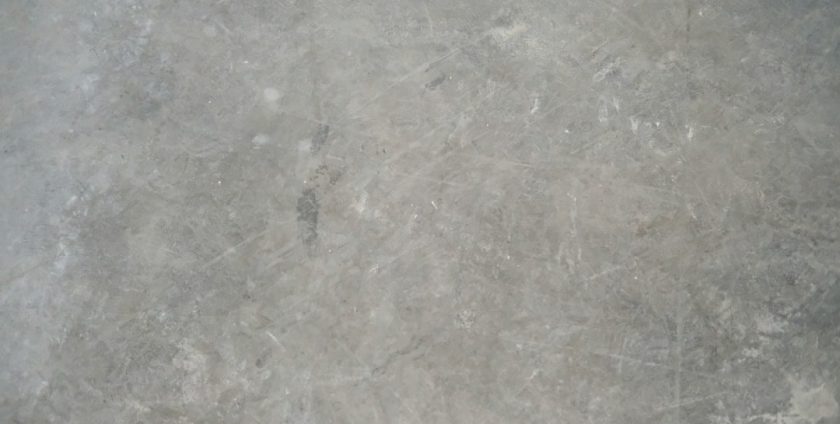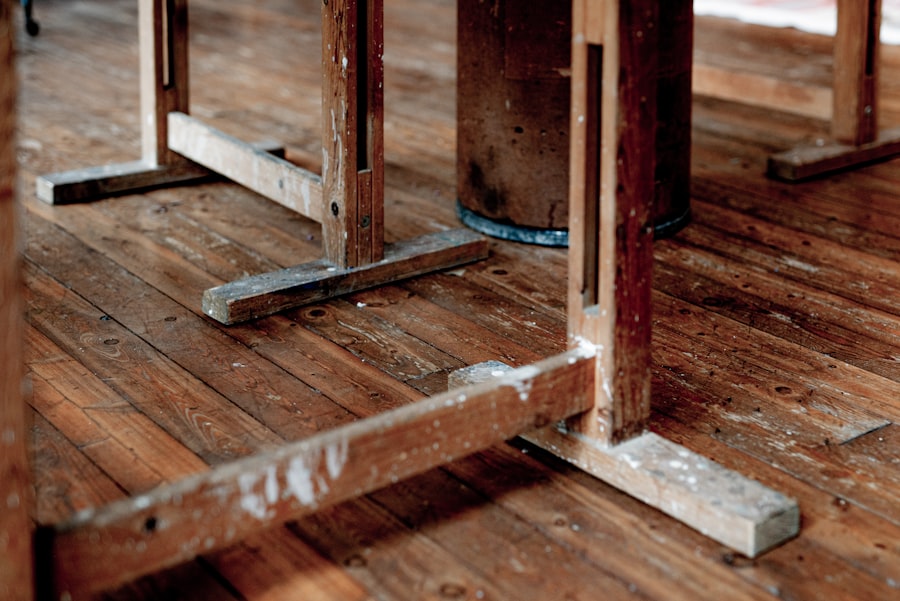
- By: admin
- Category: Commercial Floor Cleaning Machines
- 0 comment
In the bustling world of commercial and industrial cleaning, noise pollution is often an overlooked yet significant concern. The sounds generated by machinery, particularly floor scrubbers, can create an environment that is not only uncomfortable but also detrimental to productivity and employee wellbeing. Noise pollution can lead to increased stress levels, reduced concentration, and even long-term health issues.
For contract cleaners, building managers, and facility managers, understanding the implications of noise pollution is crucial for creating a conducive working environment. The impact of noise extends beyond mere annoyance; it can affect communication and collaboration among staff members. In settings such as hospitals, schools, and offices, excessive noise can disrupt workflows and hinder effective interaction.
For instance, in a healthcare facility, the constant hum of loud cleaning equipment can interfere with patient care and staff communication, potentially compromising service quality. Therefore, recognising the importance of managing noise pollution is essential for fostering a productive atmosphere that prioritises both efficiency and employee satisfaction. Please feel free to get in touch with us through our Contact Us page for any inquiries or assistance.
Summary
- Noise pollution can have a significant impact on employee health and wellbeing, leading to stress, fatigue, and decreased productivity.
- Loud floor scrubbers can be caused by factors such as motor size, brush pressure, and the type of flooring being cleaned.
- When choosing floor scrubber models, look for features such as sound-dampening technology and adjustable brush pressure to reduce noise levels.
- Regular maintenance and upkeep of floor scrubbers can help to minimise noise, including checking for worn parts and lubricating moving components.
- Implementing noise reduction strategies in the workplace, such as scheduling cleaning during quieter times and providing ear protection, can help to mitigate the impact of noise pollution on employees.
Identifying the Causes of Loud Floor Scrubbers
Floor scrubbers are indispensable tools in the commercial cleaning arsenal, yet many models are notorious for their noise levels. Understanding the specific causes of this noise is the first step towards mitigating its impact. One primary factor contributing to the loudness of floor scrubbers is the type of motor used.
Traditional scrubbers often employ older motor technology that generates significant noise during operation. Additionally, the design and materials of the scrubber can also play a role; for example, metal components may produce more sound than their plastic counterparts. Another contributing factor is the operational environment.
In large, open spaces, sound can reverberate and amplify, making even moderately loud machines seem excessively noisy. Furthermore, improper use or lack of maintenance can exacerbate noise issues. For instance, if a scrubber’s brushes are worn or if there is debris caught in the machinery, it may operate less efficiently and produce more noise as a result.
Identifying these causes allows facility managers to make informed decisions about equipment selection and maintenance practices.
Choosing Quieter Floor Scrubber Models

When it comes to selecting floor scrubbers that minimise noise pollution, there are several key features to consider. Many manufacturers now offer models specifically designed for quieter operation without sacrificing performance. These machines often incorporate advanced motor technology that reduces sound output while maintaining cleaning efficiency.
For example, some models utilise brushless motors that operate at lower decibel levels compared to traditional motors. Additionally, look for scrubbers with sound-dampening features such as insulated casings or rubberised components that absorb vibrations. These design elements can significantly reduce noise levels during operation.
It’s also worth considering battery-operated models, which tend to be quieter than their corded counterparts. By investing in quieter floor scrubber models, facility managers can create a more pleasant working environment while still achieving high standards of cleanliness.
Maintenance and Upkeep for Noise Reduction
Regular maintenance is vital not only for the longevity of floor scrubbers but also for minimising noise levels during operation. A well-maintained machine operates more efficiently and quietly than one that has been neglected. Routine checks should include inspecting brushes for wear and tear, ensuring that all moving parts are lubricated, and cleaning filters to prevent blockages that could lead to increased noise.
Moreover, staff training on proper usage techniques can also contribute to noise reduction. For instance, operators should be educated on how to adjust settings for optimal performance without unnecessary noise generation. Implementing a maintenance schedule that includes regular inspections and servicing can help identify potential issues before they escalate into more significant problems that could increase noise levels.
Implementing Noise Reduction Strategies in the Workplace
Beyond selecting quieter equipment and maintaining it properly, implementing broader noise reduction strategies within the workplace can further enhance the working environment. One effective approach is to establish designated cleaning times when foot traffic is minimal. For example, scheduling floor scrubbing during off-peak hours can significantly reduce the impact of noise on employees and clients alike.
Additionally, creating physical barriers or sound-absorbing materials in high-traffic areas can help mitigate noise pollution. Installing acoustic panels or using carpets in certain spaces can absorb sound waves and reduce overall noise levels. Encouraging a culture of awareness around noise pollution among staff members can also foster a more considerate workplace where everyone is mindful of their surroundings.
Considering the Impact on Employee Health and Wellbeing

The implications of noise pollution extend beyond mere discomfort; they can have profound effects on employee health and wellbeing. Prolonged exposure to high noise levels has been linked to various health issues, including hearing loss, increased stress levels, and even cardiovascular problems. In a commercial cleaning context, where employees may spend significant time operating loud machinery, it is essential to consider these risks seriously.
Moreover, excessive noise can lead to decreased job satisfaction and increased turnover rates among staff members. Employees who feel stressed or overwhelmed by their working environment are less likely to perform at their best. By prioritising noise reduction strategies and investing in quieter equipment, facility managers not only enhance productivity but also demonstrate a commitment to employee wellbeing.
Compliance with Noise Regulations and Standards
In Australia, various regulations govern workplace noise levels to protect employees from excessive exposure. The Work Health and Safety Act outlines specific requirements for managing noise in the workplace, including conducting regular assessments and implementing control measures where necessary. Facility managers must be aware of these regulations to ensure compliance and avoid potential penalties.
Conducting regular noise assessments is crucial for identifying areas where sound levels may exceed acceptable limits. By measuring decibel levels during different operational scenarios, managers can pinpoint problem areas and take appropriate action to mitigate excessive noise. Compliance with these regulations not only protects employees but also enhances the overall reputation of the organisation as a responsible employer.
Seeking Professional Assistance for Noise Assessment and Solutions
For facility managers grappling with persistent noise issues, seeking professional assistance can provide valuable insights and solutions. Acoustic consultants specialise in assessing workplace environments and can offer tailored recommendations for reducing noise pollution effectively. They can conduct comprehensive assessments to identify specific sources of noise and suggest appropriate mitigation strategies.
Engaging with professionals not only ensures compliance with regulations but also provides access to expertise that may not be available in-house. Whether it’s through recommending quieter equipment or suggesting structural changes to reduce sound transmission, professional assistance can be instrumental in creating a quieter, more productive workplace. In conclusion, addressing noise pollution in commercial and industrial cleaning environments is essential for fostering a healthy and productive workplace.
By understanding its impact, identifying causes, choosing quieter equipment, maintaining machinery properly, implementing effective strategies, considering employee wellbeing, ensuring compliance with regulations, and seeking professional help when needed, facility managers can significantly reduce noise levels. This proactive approach not only enhances operational efficiency but also contributes to a more positive work environment for all employees. **FAQs** 1.
**What are the main causes of loud floor scrubbers?**
Loud floor scrubbers are often caused by outdated motor technology, poor maintenance practices, and environmental factors such as acoustics in large spaces. 2. **How can I choose a quieter floor scrubber?**
Look for models with advanced motor technology designed for quiet operation, as well as features like sound-dampening materials and battery-operated options.
3. **What maintenance practices help reduce noise?**
Regular inspections of brushes and moving parts, lubrication of components, and proper usage training for staff can all contribute to quieter operation. 4.
**What are some effective workplace strategies for reducing noise?**
Scheduling cleaning during off-peak hours and using sound-absorbing materials in high-traffic areas are effective strategies for minimising noise pollution. 5. **How does noise pollution affect employee health?**
Prolonged exposure to high noise levels can lead to hearing loss, increased stress levels, decreased job satisfaction, and higher turnover rates among employees.
FAQs
What are the common causes of loud floor scrubbers?
Common causes of loud floor scrubbers include worn out or damaged parts, improper maintenance, and lack of lubrication. Additionally, the type and quality of the motor and fan can also contribute to the noise level.
How can I reduce the noise level of my floor scrubber?
To reduce the noise level of your floor scrubber, you can start by regularly maintaining and lubricating the machine. Additionally, replacing worn out or damaged parts, such as the squeegees and brushes, can also help reduce noise. Using sound-dampening materials and investing in a high-quality, low-noise motor and fan can further contribute to noise reduction.
Are there regulations regarding the noise level of floor scrubbers?
Yes, there are regulations in place regarding the noise level of floor scrubbers. In the UK, the Control of Noise at Work Regulations 2005 sets out the legal requirements for employers to protect their employees from excessive noise in the workplace. This includes the use of floor scrubbers and other machinery.
What are the potential risks of a loud floor scrubber?
Exposure to loud noise from a floor scrubber can lead to hearing damage and other health issues, such as tinnitus and stress. Prolonged exposure to high noise levels can also impact concentration and productivity, as well as cause communication difficulties in the workplace.
How can I measure the noise level of my floor scrubber?
The noise level of a floor scrubber can be measured using a sound level meter. This device measures the intensity of sound in decibels (dB). It is important to regularly monitor the noise level of your floor scrubber to ensure it complies with legal regulations and to take appropriate measures for noise reduction.
